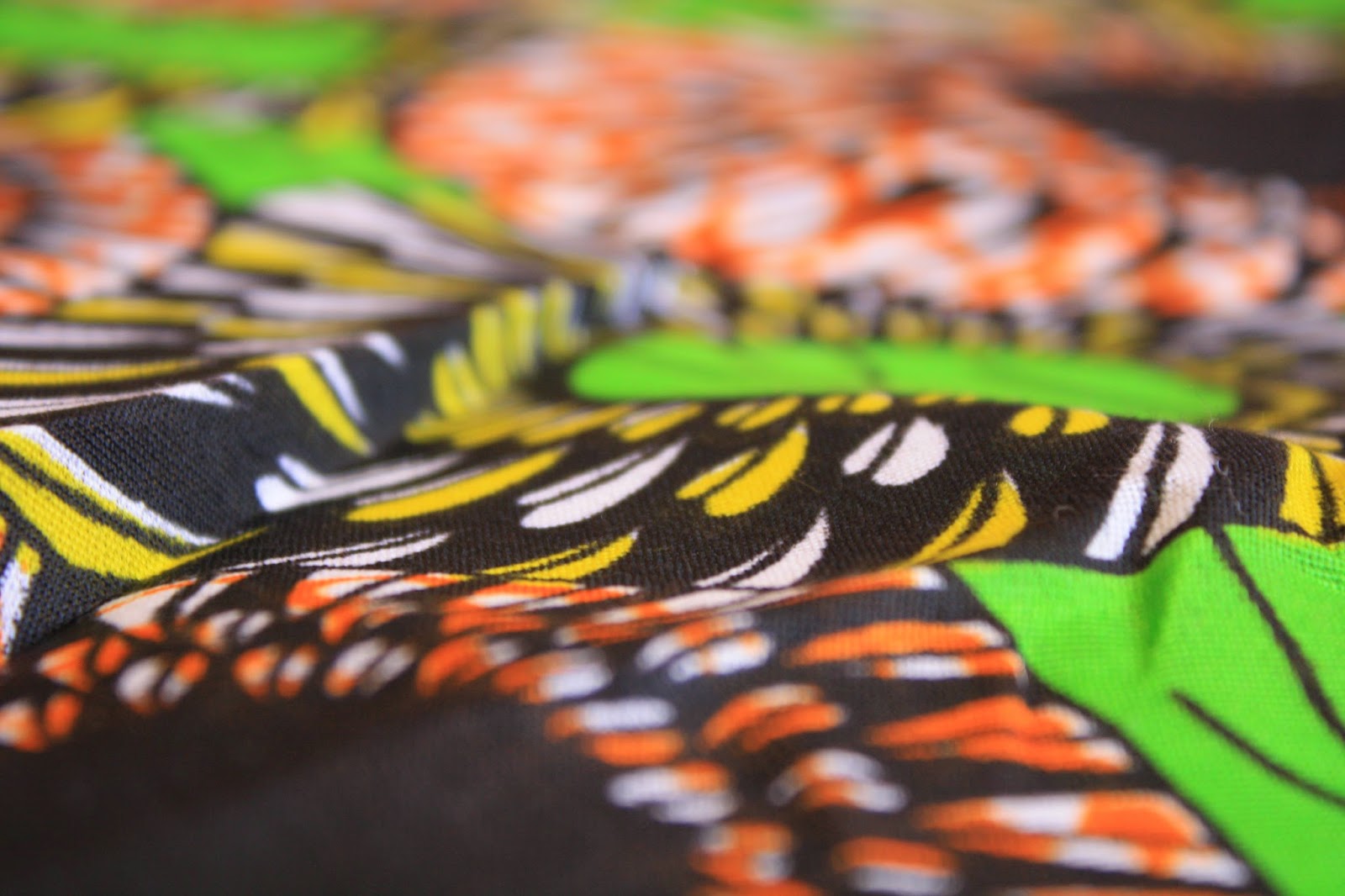When I arrived in Kenya, I knew
that tailoring was common, and I had the plan to get an outfit made for
me. I had no idea that within days
I would become totally obsessed with textiles and start a collection that will
definitely make packing to return home difficult.
The first thing I found were
khangas, or lesos (machekas in South Africa). These are cheap cotton pieces of fabric that are used for
literally everything.
You can carry a baby, carry your groceries, wear it as a wrap, have a
picnic on it, get clothing made… anything. There is a growing market of people making craft and high fashion items like
shoes and purses covered in patterned khangas, which are really cool. They are usually printed in two bright,
contrasting colors and have a saying on them in Kiswahili. When you buy them, you get two
pieces that are a few yards long each, for about three dollars.
 |
| from left: Mumias town, Lodwar, Lodwar, Johannesburg, Mombasa |
During my first field trip to
Kakamega, I had one goal, and that was to buy a khanga to remember my time
there. While you don’t see them as
much in Nairobi, every woman in Mumias town was wearing or carrying a khanga of
some sort. I bought my first one,
a blue and orange piece that said “UKIPATA SHUKURA HATA MIMI” which means
something like “when you receive, also give me thanks.” I wrote the place and date I purchased
it on the edge and decided I would have to collect one every time I traveled.
 |
| number one |
By now I have collected quite a few
and gotten one in Kakamega, Turkana, Nairobi, and Johannesburg. Sonia also brought me one from Mombasa,
and I have been collecting some to give as gifts.
 |
| DRC skirt |
 |
| a "few" examples |
African waxprints are very common is West Africa, but as Joburg is a hub, everything is available there. I stocked up on a couple while I had the chance.
 |
| wax print |
My plan when I return to Kenya is
to get a few yards of kitenge and have an outfit made. Any comments or suggestions? Let me know!






